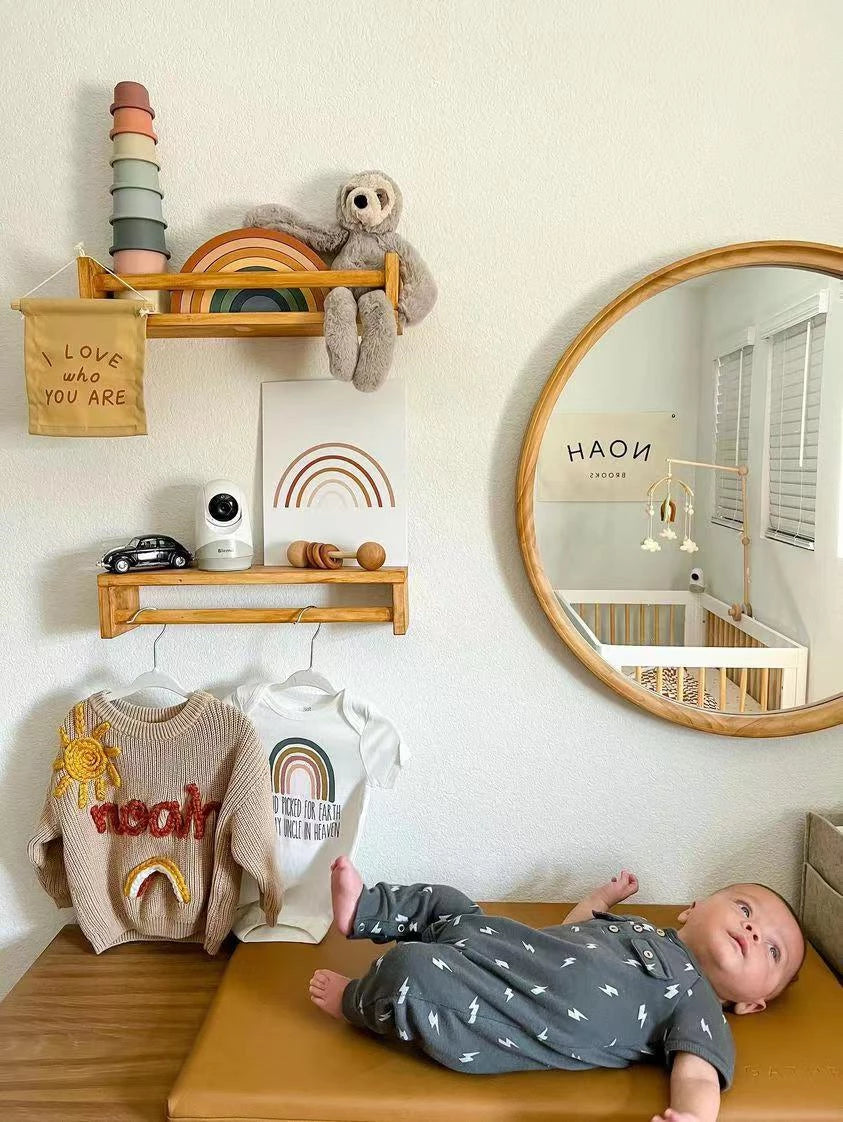
How to Establish a Sleep Schedule for Your 3-Month-Old Baby
Share
How to Establish a Sleep Schedule for Your 3-Month-Old Baby
At 3 months old, your baby’s sleep patterns are evolving, and while the nights may feel long with late-night feedings, you're approaching an important milestone. As your little one outgrows clothes and diapers, their sleep needs are changing too. At this stage, your baby’s developing circadian rhythms will start influencing their sleep-wake cycle. While routines may still vary, you might notice emerging patterns in naps, sleep duration, and wake times. Understanding your baby’s sleep schedule can help both of you navigate this stage with more ease. Let’s explore what you need to know.
The Sleep Habits of a 3-Month-Old Baby
At this stage, your baby is growing quickly, and their sleep habits are evolving too. The 3-month milestone is an exciting time because their circadian rhythms are beginning to take shape, which means they’re starting to recognize the difference between day and night. This is key in paving the way for longer sleep stretches at night.
Understanding a 3-Month-Old’s Sleep Needs
On average, a 3-month-old requires around 14-16 hours of sleep within a 24-hour period. This sleep is typically broken down as follows:
- Night Sleep: 10-12 hours
- Daytime Naps: 4-6 hours
However, keep in mind that every baby is different. Some might need slightly more or less sleep, and that’s completely normal. Your little one may still be waking up for feedings in the middle of the night, but don’t worry, those longer stretches are coming soon.
Longer Sleep Stretches
By the time your baby reaches 3 months, many infants are capable of sleeping for longer stretches at night—up to 5-6 hours at a time. This means that while they may still need a nighttime feed, they are starting to be able to sleep for longer periods without waking.
Example of a Sleep Schedule for a 3-Month-Old Baby
The ideal sleep schedule for your 3-month-old will largely depend on their individual needs. While you may still see some unpredictability in your baby's routine at this age, a typical day might follow a general pattern. Keep in mind that every baby is different, and flexibility is key as you adjust to their changing sleep habits. Here’s an example of what a day could look like for your little one:
| Time | Activity | Notes |
|---|---|---|
| 7:00 AM | Wake up and feed | Start the day with feeding and diaper change |
| 8:00-8:30 AM | Morning nap | 45-90 minutes |
| 10:00 AM | Feed and play | Gentle tummy time and interaction |
| 11:30 AM-1:00 PM | Midday nap | 45-90 minutes |
| 1:00 PM | Feed and play | Active play |
| 2:30-3:30 PM | Afternoon nap | 45-90 minutes |
| 4:00 PM | Feed and play | Quiet activities |
| 5:30-6:15 PM | Catnap | Short 15-45 minute nap |
| 7:00 PM | Bedtime routine | Bath, feed, and wind-down |
| 8:00 PM | Bedtime | Lights out |
Note: Every baby is unique. This schedule is a general guideline and may need adjustment based on your baby's individual needs.
Five Tips For Better Sleep
1. Stick to a Consistent Routine
Establishing a routine is essential for helping your 3-month-old develop healthy sleep habits. While it doesn’t require strict scheduling, having consistent sleep patterns will help regulate your baby’s internal clock.
2. Create a Relaxing Pre-Sleep Ritual
Developing a calm pre-sleep routine can help signal to your baby that it’s time to wind down. This could include activities like a warm bath, a soft lullaby, or even a gentle massage. The consistency of this routine will help your baby feel secure and relaxed.
3. Create an Ideal Sleep Environment
The environment where your baby sleeps can significantly impact their sleep quality. Ensure the room is cool (68-72°F), dark, and quiet. Using blackout curtains or a white noise machine can make a big difference in creating a restful atmosphere.
4. Avoid Overstimulation Before Bedtime
The hours leading up to bedtime should be calm and quiet. Avoid overly stimulating activities or bright lights. Instead, try soft lullabies or soothing sounds to help your baby relax before they drift off to sleep.
5. Follow Safe Sleep Practices
Always follow safe sleep guidelines: place your baby on their back to sleep, use a firm mattress, and keep the crib free of loose bedding, toys, or bumpers. If you’re transitioning from swaddling, try using a sleep sack to provide comfort and warmth.
Why Choose HelloBaby?
If you're looking to establish a consistent and safe sleep routine for your baby, HelloBaby's monitors are the perfect solution. Designed for new parents, safety-conscious families, and those on a budget, HelloBaby offers a range of smart features including video and audio monitoring, night vision, two-way communication, and temperature/humidity tracking. With the ability to support multiple cameras, it's ideal for multi-child households, providing peace of mind with every sleep cycle. Whether you’re a tech enthusiast or simply want to ensure the best for your little one, HelloBaby’s monitors make it easy to keep your baby safe and comfortable while they sleep.
In Summary
As your 3-month-old's sleep patterns evolve, creating a consistent routine and safe sleep environment is key to supporting healthy sleep habits. Sleep Science shows that understanding and responding to your baby’s sleep cues is essential for their development and well-being. HelloBaby makes it easy to monitor your baby with features like video and audio monitoring, night vision, and two-way communication. These sleep tips can help ensure your little one’s sleep routine is smooth and safe. Perfect for new parents or families looking for an affordable, reliable solution, HelloBaby offers peace of mind with every sleep cycle. Invest in HelloBaby today for comfort, safety, and ease.
